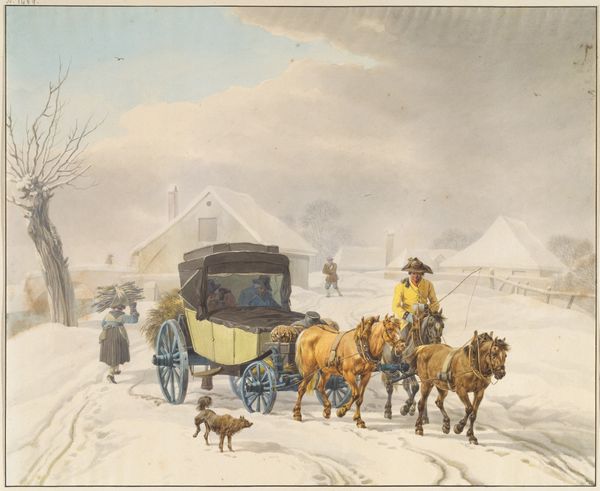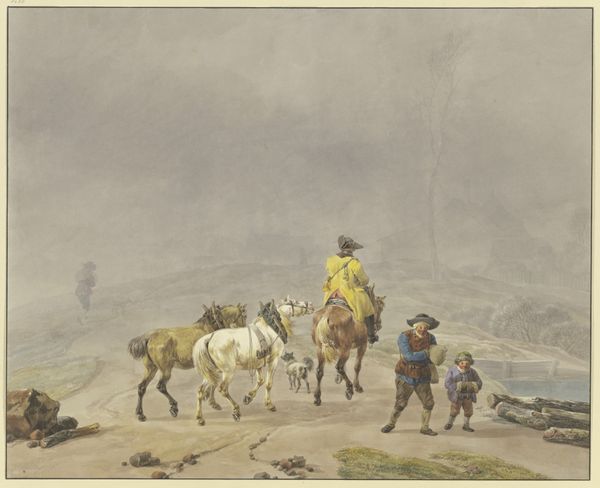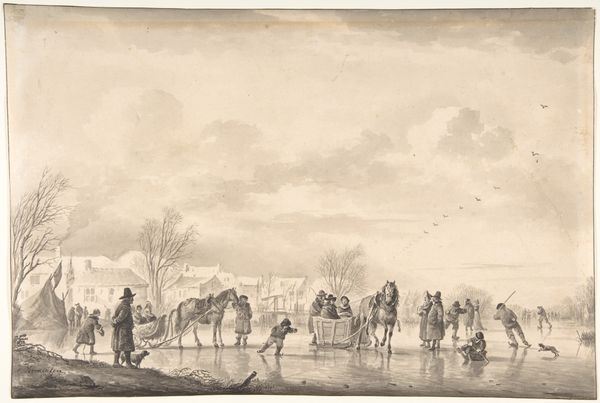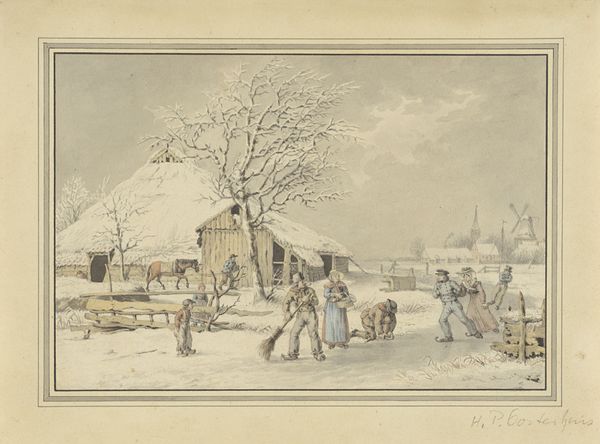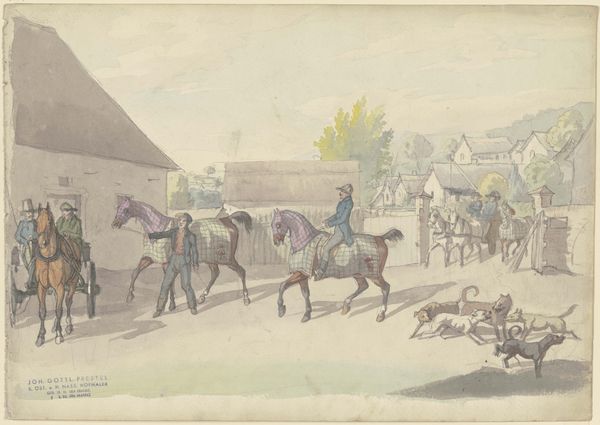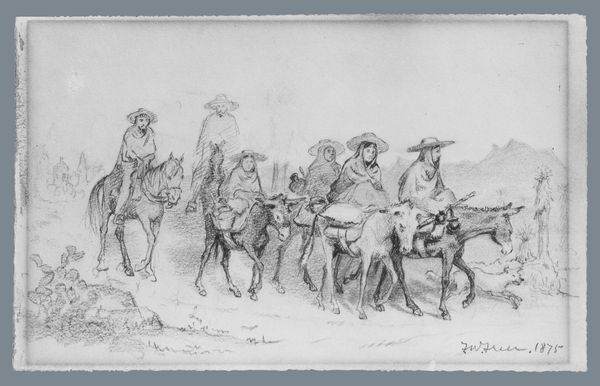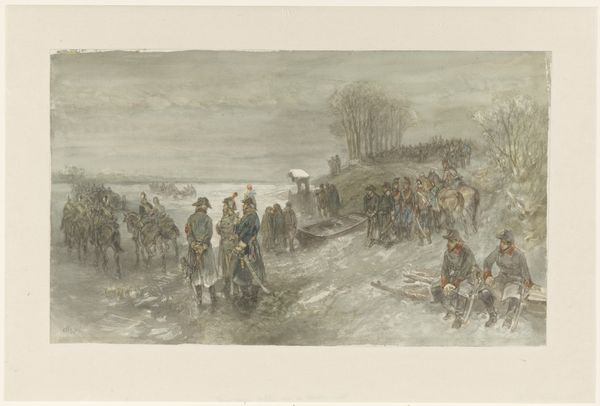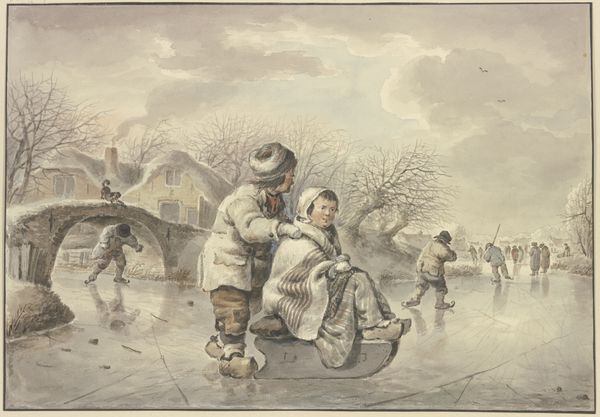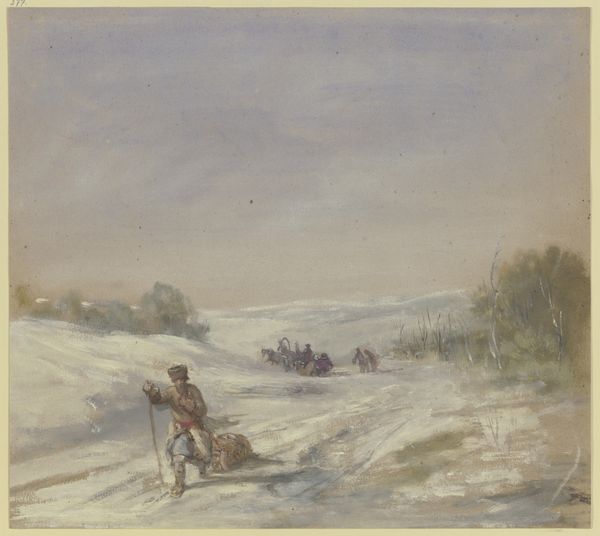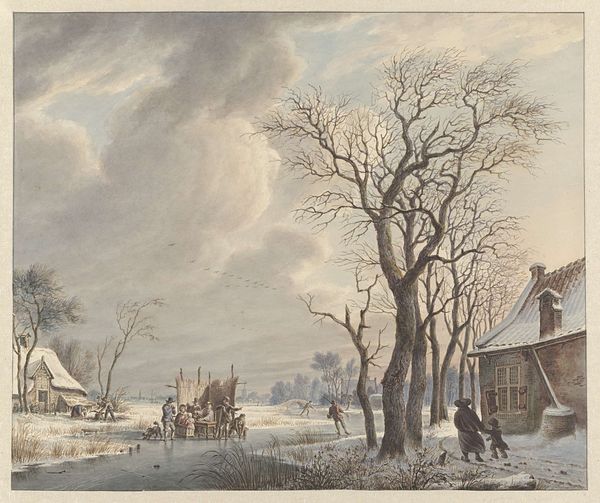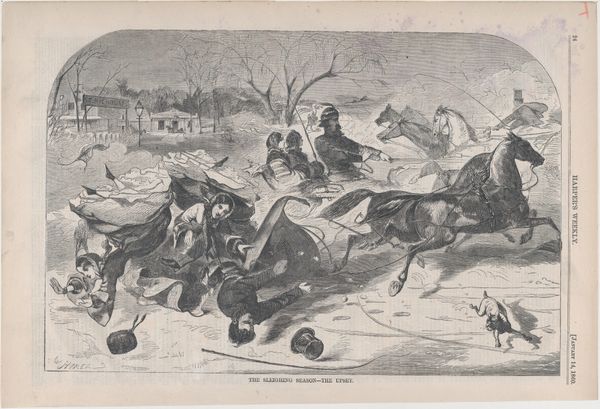
Postilion on Horse in a Winter Landscape 1793 - 1803
0:00
0:00
drawing, painting, print, watercolor
#
drawing
#
painting
# print
#
landscape
#
figuration
#
watercolor
#
romanticism
#
cityscape
#
genre-painting
#
watercolor
Dimensions: sheet: 14 9/16 x 19 11/16 in. (37 x 50 cm)
Copyright: Public Domain
Curator: This watercolor is "Postilion on Horse in a Winter Landscape" created between 1793 and 1803 by Wilhelm von Kobell. There’s such a sense of stillness in it, almost dreamlike. What stands out to you initially? Editor: It does feel quiet, like the snow has muffled everything. What really grabs me are the everyday figures—the postilion, the shivering man and boy. How would you interpret them? Curator: Considering the period, and the choice of watercolor as a medium, I'm interested in how Kobell approaches the idea of landscape as a marketable commodity. Think about it: landscape painting became increasingly popular among the rising merchant class. This watercolor, easily reproducible as a print, offers a picturesque scene depicting labor in a softened, palatable way. It speaks volumes about how artists like Kobell were responding to market demands. Does it change how you see the scene? Editor: Absolutely. Knowing it could be easily reproduced highlights the commodification of even harsh realities. So, the medium influences the message. Are you suggesting the beauty almost masks the struggles of working in such conditions? Curator: Precisely! And watercolor, quick and relatively inexpensive, democratizes image-making in a new way. The ability to be reproduced also impacts the meaning. It wasn't about creating a singular, precious object, but about broader dissemination of an idea of landscape, labor, and leisure that appealed to a wider consumer base. Editor: It’s fascinating to think about art responding so directly to economics. I hadn't considered watercolor as potentially subversive in that sense. Curator: Exactly! And consider who has access to what and how an artist like Kobell challenges what are historically rigid constraints of artistic making. These 'minor' media carry social and economic meanings. Anything else standing out? Editor: I keep coming back to those figures trudging in the snow. I wonder how they would feel about being part of a landscape someone would hang on their wall? Food for thought. Thanks so much for your perspective. Curator: And thank you, it’s enriching to revisit assumptions about artistic media and production.
Comments
No comments
Be the first to comment and join the conversation on the ultimate creative platform.
